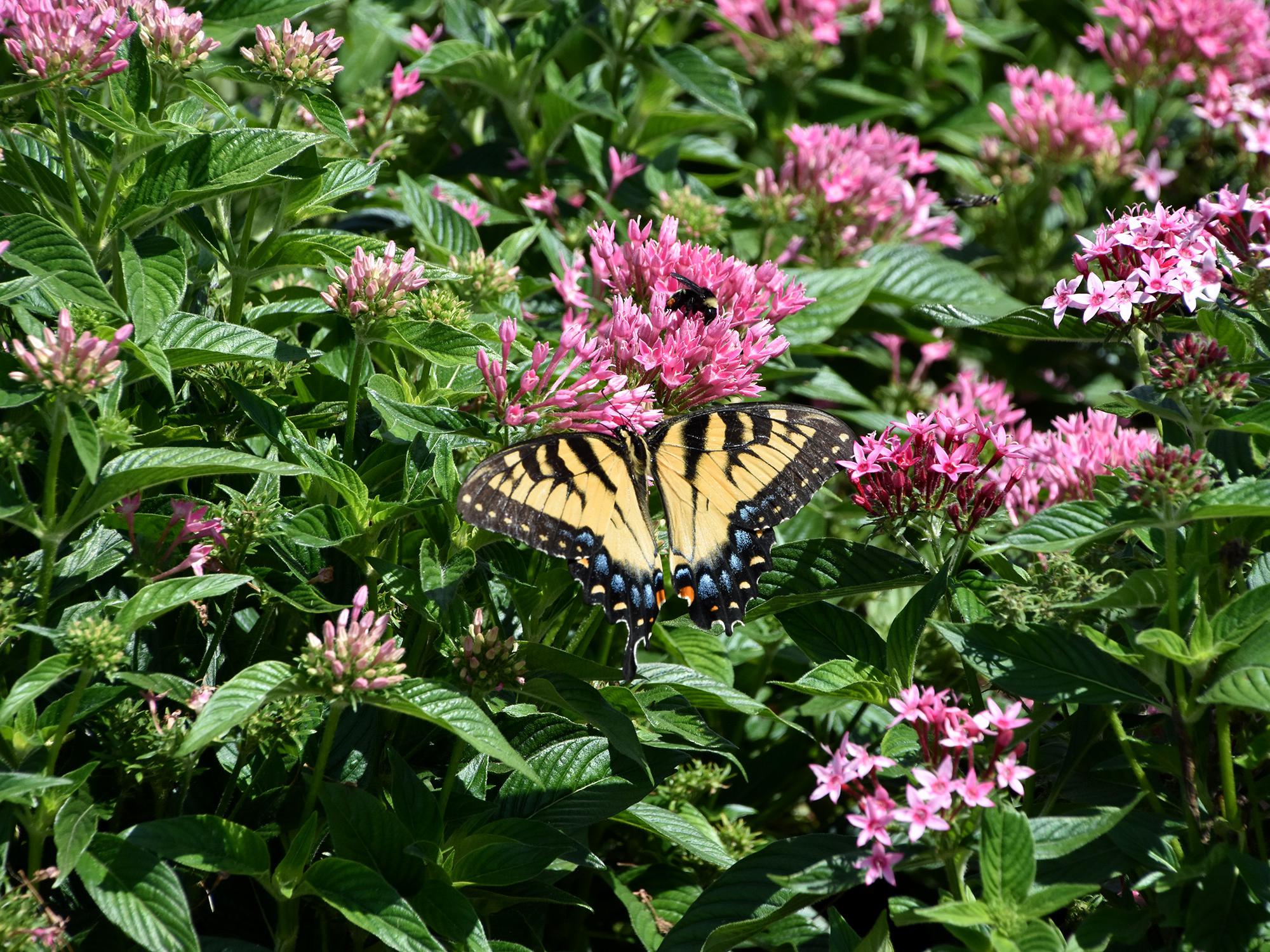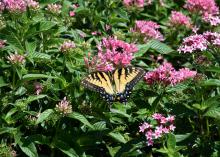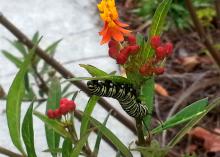Information Possibly Outdated
The information presented on this page was originally released on July 9, 2018. It may not be outdated, but please search our site for more current information. If you plan to quote or reference this information in a publication, please check with the Extension specialist or author before proceeding.
Certain blooming plants attract many butterflies
Like most gardeners, I love watching the various butterflies that visit my garden.
One I really like is the giant swallowtail, with its black body and vivid, yellow stripes. This creature loves my citrus, where she lays her eggs. The developing caterpillars have a unique defense mechanism; they look like bird poop on the citrus leaves.
Now, I know that not everyone grows citrus trees, so here are some of my favorite butterfly-attracting plants that everyone can grow.
Besides providing great color for us to enjoy, pentas are garden magnets for butterflies and hummingbirds because they are rich sources of nectar. These plants are great at tolerating the heat and humidity of our Mississippi summers.
Penta gets its name from the Latin word for “five,” since each small flower has five petals. In fact, the star-like reference is fitting as one common name for pentas is Egyptian Star Cluster.
The blooms are produced in clusters of these five-petal flowers from spring until frost in the fall. It’s common for each penta plant to have up to 20 clusters of flowers at any given time, and the butterflies certainly enjoy the feast.
A native plant you should consider for your landscape is butterfly weed, known scientifically as Asclepias tuberosa. It was chosen as Mississippi Medallion winners in 2012. Butterfly weed, also commonly called milkweed, is low maintenance, attracts a lot of butterflies and is deer resistant.
In middle to late summer, butterfly weed lives up to its name as a butterfly magnet. It is the primary food source for Monarch caterpillars.
If you want a butterfly weed that blooms all summer long, then consider the tropical milkweed, Asclepias currassavica. Many garden centers carry this plant. I like it because it provides abundant forage for the caterpillars before the native milkweed kicks in.
Butterfly bush, or Buddleia, has flowers composed of sweetly fragrant panicles of tiny blooms in various shades of white, blue, purple, pink, red and even yellow. The flowers are displayed on arching graceful stems. Butterflies, bees and hummingbirds love these flowers.
Plant butterfly bush in full sun for best flowering, as shade reduces flowering and the plant becomes thin and leggy. Butterfly bush tolerates just about any soil type as long as it’s well drained.
Treat butterfly bush like a flowering perennial. When new shoots start to appear in the spring, prune last year’s growth back to about 6 inches from the ground. This trim encourages new growth, and the flowers are produced on new wood. Deadhead to help side shoots develop larger flower heads.
These plants I’ve discussed are currently performing great in my garden.
There are lots of flowering plants that will attract butterflies and other pollinators to your garden, so get out to your favorite garden center and bring home a selection that will attract butterflies to your home garden.





